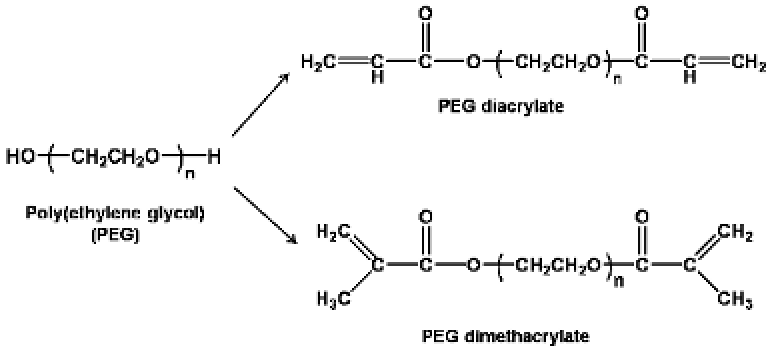Biomedical Engineering Reference
In-Depth Information
regeneration,
88
for the encapsulation of mesenchymal stem cells,
89
and for the delivery of nitric oxide to reduce platelet adhesion
and smooth muscle cell proliferation.
90
Additionally, Elbert and
Hubbell
91
used diacrylated PEG macromers to fabricate hydrogels
incorporating a variety of peptides by first reacting the macromers
with a cysteine-containing peptide via a conjugate addition reac-
tion and then by using subsequent photopolymerization into a
network.
PEG hydrogel networks are formed from functionalized PEG
molecules, such as PEG-di(meth)acrylate (Fig. 8.6). Polymerization
is initiated by reactive centers, such as radicals, generated from
thermal energy, redox reactions, or the photo-cleavage of initiator
molecules. These free radicals propagate through unsaturated vinyl
bonds on the PEG macromolecular monomers, and chain polymer-
ization occurs. The propagation of free radicals through multiple
carbon-carbon double bonds on the constituting PEG monomers
results in covalently cross-linked, high-molecular-weight kinetic
chains. The functionalities of the chain-growth polymerized hydro-
gels can be expanded through the copolymerization of other func-
tional di(meth)acrylated macromers.
Figure 8.6.
Chemical structures of a PEG macromer and its
di(meth)acrylate derivatives that often solution polymerize to form
hydrogel networks useful forbiomaterial applications.









Search WWH ::

Custom Search